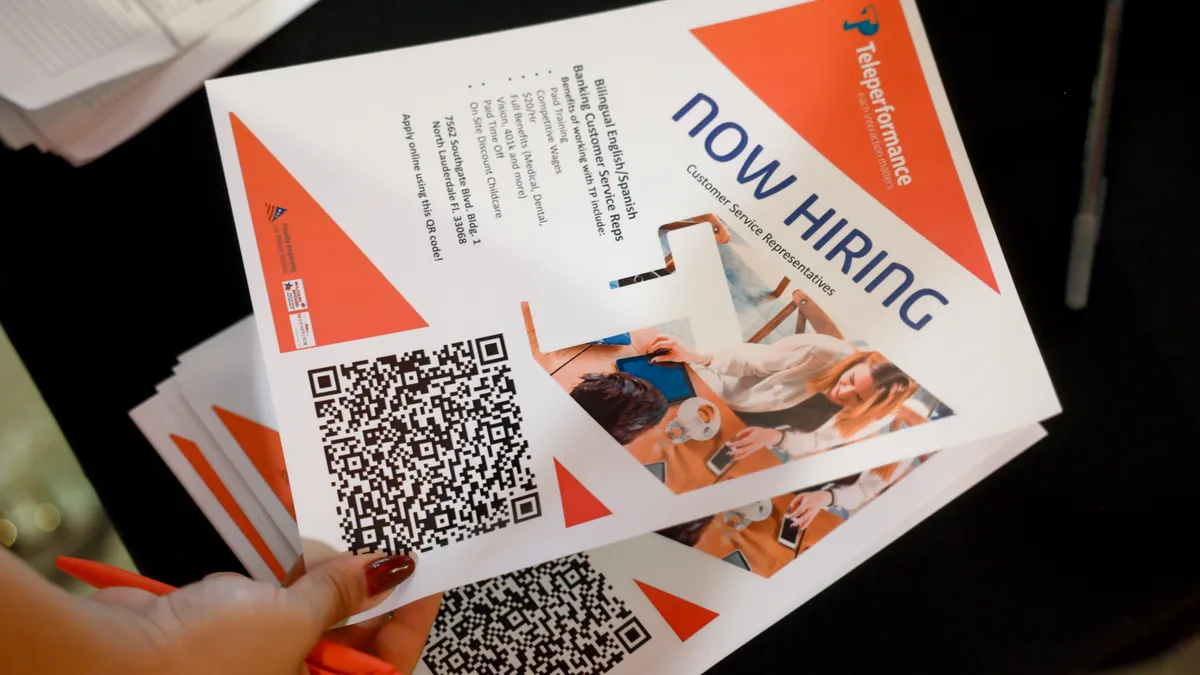For many companies, there just aren't enough hours in the day for high-priority projects. Some turn to contingent workers sourced through freelancer sites to get them done, but a new twist on gig work is evolving internally. Some employers create their own internal platforms to find "gig workers" among current employees willing to work on these projects.
Kelley Steven-Waiss, CHRO of HERE Technologies created an internal gig platform for HERE. "I had been a thought leader and contributor for [the] last four years in the future of work," she told HR Dive in an email. "I realized that there was a gap in HR technology that would enable talent mobility and optimization of talent from the inside."
Internal gig platforms are an emerging space, though not yet widely available, Laurie Bienstock, global leader, talent management at Willis Tower Watson, said. "There is not currently a predominant player in this space but that is sure to change soon," she told HR Dive via email.
So how do these platforms actually work?
Sourcing freelancers from within
Internal gig platforms could function in a few ways, Bienstock said. Some "technologically savvy organizations are utilizing their own engineers to build custom platforms for this purpose," which could entail using machine learning to match talent with assignments algorithmically. "In other cases," she said, "organizations may be using enhanced spreadsheets to inventory and track skills and connect supply and demand."
Steven-Waiss said HERE's platform uses machine learning to pair employees with projects that allow them to upskill and hone their current skills. Employees are often matched with experts in skill domains they need to learn, Steven-Waiss said. Bienstock said workers can allot a portion of their time to gig assignments, flexing skills they may not use in their current positions.
"The goal is to build teams with a source-agnostic approach," Balaji Bondili, general manager, Deloitte Pixel, Deloitte Consulting told HR Dive, "bringing the best people to the team agnostic of where they sit." He knows of one such company that started as an external freelancing company but now focuses as much on creating total talent management that includes internal and external talent.
Boosting skills and productivity
The gig work at HERE is performed during regular work hours, and the "opportunity seekers" that use the platform are approved by their managers to do so, wrote Steven-Waiss, "as an effort to develop their skills or build their engagement." The only downside, she added, is many employees are overloaded, "so at some times, participation will vary depending on existing workloads and managers' willingness to see the value in talent sharing and development."
It's important to consider, Bienstock advised, that project owners must feel confident that employees using the platforms will be able to complete the assignments in order for the marketplace to work as an upskilling tool. These types of projects often have clear deliverables, she said, which can allow for the addition of needed, short-term talent to the team.
Gaining experiences and skills often set up employees to move into different roles within the organization, according to Bienstock. Employees can create a career experience that best fits their needs and move to new levels or different roles. In addition to boosting workers' skill sets and stretching their networks, the platforms can improve productivity. Employers may consider rewards such as spot bonuses to encourage participation.
The future of internal gig work
Bienstock said employers should be thoughtful in the way they pitch these platforms to workers. How the tech is described can be just as important to successfully pairing talent with gig projects as the technology's design. "Just having the platform does not mean people will use it," she said. "Piloting within a defined group is a great way to test the applicability. However, remember that in order for a talent marketplace to work — it must have enough users."
Bondili said, though these platforms are primarily used for side projects, some employers have used them to reallocate workers to temporarily focus on 3- to 6-month projects. Ultimately, the use cases are myriad.
"It doesn't take a 'Spotify' to stand up this way of working," Steven-Waiss said. "The internal talent marketplace ROI is very high and minimal change management effort [stands] it up. Once most senior leaders and those managing the work see the value in the higher productivity levels, engagement, and upskilling — most will jump in and adopt this way of working quickly."





















